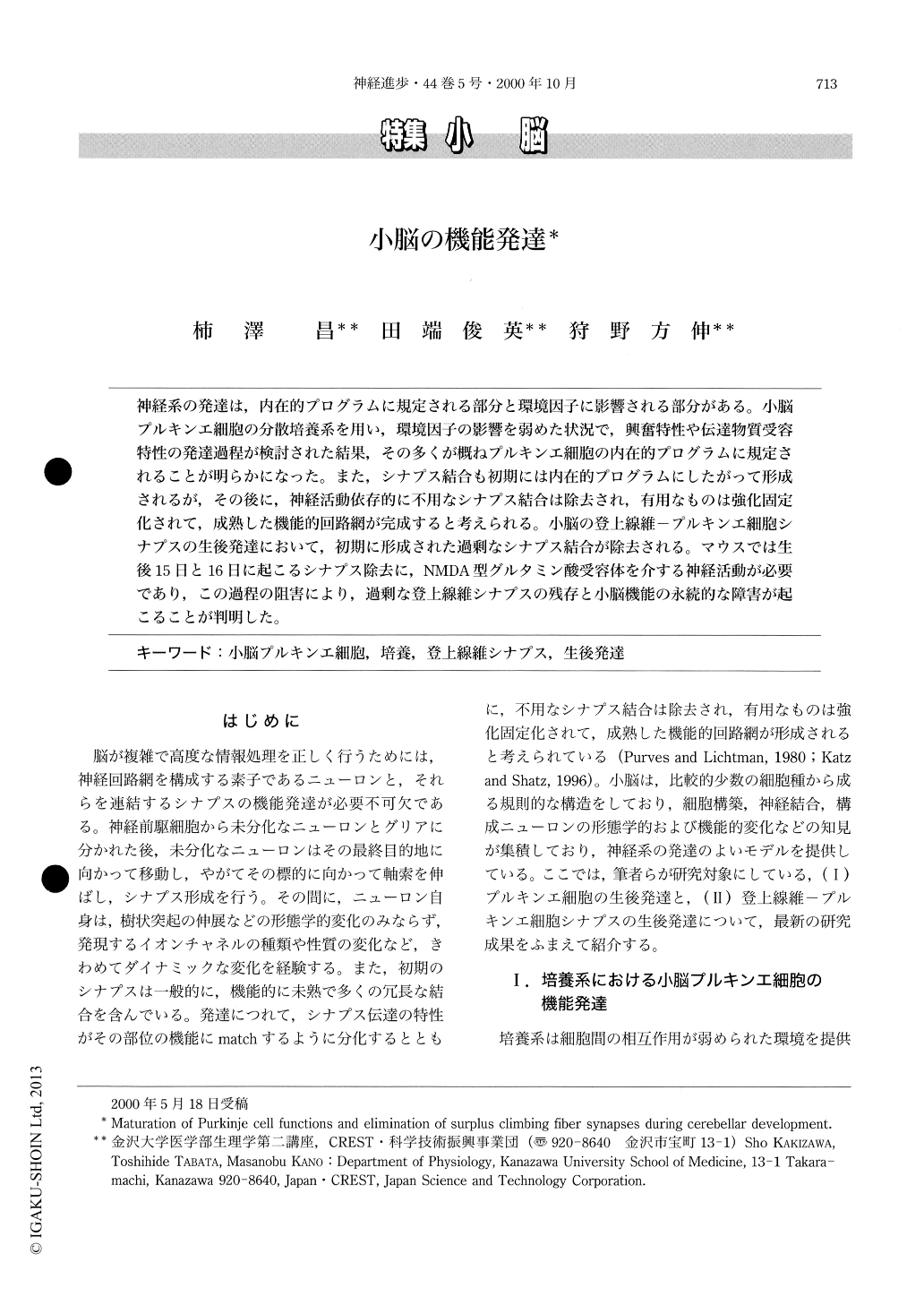Japanese
English
- 有料閲覧
- Abstract 文献概要
- 1ページ目 Look Inside
神経系の発達は,内在的プログラムに規定される部分と環境因子に影響される部分がある。小脳プルキンエ細胞の分散培養系を用い,環境因子の影響を弱めた状況で,興奮特性や伝達物質受容特性の発達過程が検討された結果,その多くが概ねプルキンエ細胞の内在的プログラムに規定されることが明らかになった。また,シナプス結合も初期には内在的プログラムにしたがって形成されるが,その後に,神経活動依存的に不用なシナプス結合は除去され,有用なものは強化固定化されて,成熟した機能的回路網が完成すると考えられる。小脳の登上線維―プルキンエ細胞シナプスの生後発達において,初期に形成された過剰なシナプス結合が除去される。マウスでは生後15日と16日に起こるシナプス除去に,NMDA型グルタミン酸受容体を介する神経活動が必要であり,この過程の阻害により,過剰な登上線維シナプスの残存と小脳機能の永続的な障害が起こることが判明した。
Cerebellar neurons isolated from perinatal animals can be cultured in an in vitro environment with reduced cellular interactions for several weeks. Such a culture system allows one to investigate the intrinsically programed functional maturation of cerebellar neurons. Culture systems are also useful to search for extrinsic factors regulating functional maturation. Because strict pharmacological control can be achieved in a culture system, one can precisely evaluate the effects of a candidate molecule for the extrinsic factor on the functional maturation of cultured neurons.

Copyright © 2000, Igaku-Shoin Ltd. All rights reserved.


